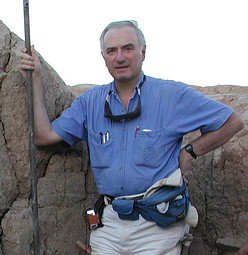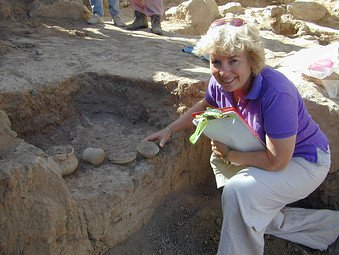From the depths of time: the origins of communication and community in ancient Syria
The past has a long-lasting importance: this is the fil rouge of this exhibition, which revolves around two main focal points, i.e. the hominids of Dmanisi (current Georgia) and the city-state of Urkesh (current Syria), and illustrates how important archaeology is for the national unity of Syria in our days.
The main question of this path is: what is the bond that unifies the human groups? While trying to find an answer to this question, three phases of human development have been analyzed and described, i.e. perception, language and writing.
The individuals who lived in the first phase identified each other through immediate and concrete contacts. We can understand these contacts by analyzing the excavations of Dmanisi, dating back to the Lower Paleolithic (1,800,000 years ago). During the Upper Paleolithic, instead, men developed the ability of connecting non-consecutive perceptions, an example of which can be found in the annotations on bones that were found in different sites from Africa to Europe.
The second period coincides with the development of language, which allowed the groups of humans to conceptualize their realities in terms of space and time, and prompted a more precise communication and a higher progress ability.
This progress was even more evident in the third period, characterized by the introduction of writing: the ideas of the brain could be expressed, communicated, preserved and compared in the present and in the future. In this sense, writing created many different forms of communication, both through symbols and artistic representations. The first cities and states in Middle-East were born thanks to this revolutionary discovery.
The presentation of the Exhibition will dive into these three phases (perception, language, writing) through the results of the currently active excavations: Dmanisi (Georgia) and Mozan/Urkesh (Syria). Among the speakers, we list the consultants of the exhibition: David Lordkipanidze (consultant for the Paleolitic history of Georgia, Director of the Georgia National Museum), Tamas Gamkrelidze (consultant for the history of the language, honorary President of the Georgian Academy of Sciences), Maamoun Abdulkarim (consultant for Syria, General Director of Antiquities of Syria).
While we normally refer to Neolithic as the origin of the social groups and of the first cities, by observing the results of the Paleolitic age, the curators came to a better comprehension of this dynamic. The starting point will be the materials found in the recent hominid recoveries found on the mountains of Georgia. The Exhibition and the Presentation will introduce five hominid skulls dating back to 1,800,000 years ago, and many artifacts, explaining its meaning. The latter one, perfectly intact, belonged to an individual with an oblong face, big teeth and a relatively small skull. Another one belonged to a toothless person that, in spite of this condition, was able to survive for many years before dying. They were an early form of Homo Erectus, individuals that walked upright and were quite similar to us. From these evidences we can see an extremely important point: a higher expectation of life could be reached with the help of the other individuals, which probably was the first form of generosity or charitas in the world.
Afterwards, the recent reconstructions of the last phase of the Paleolithic will be introduced, especially the symbols and annotations found on bones. The great transformation of the bonds among Paleolithic and Neolithic human groups will be deepened, until exploring the origins of the language and its diffusions, in particular of the Indo-European ones.
The transformations occurred during the Neolithic time, which ended in the passage from the oral to the written word, led to the foundation of the first cities, like Urkesh, one of the most ancient cities of the world. The Exhibition focuses on the discoveries of Urkesh, including a multi-level temple built around 3,500 b.C., on the top of which there was the temple dedicated to Kumabi, one of the most important gods of the Hurrian pantheon. This palace, built by king Tupkish, shows in detail the art of the city, the royal administration, and how the population was controlled. One of the greatest discoveries of the site of Urkesh is the majestic underground structure, that was called abi in the Hurrian language, and as used as a place to pray the gods of the netherworld. The conclusion of the section of ancient Urkesh evaluates the importance of these excavations, and the impacts they have on our knowledge of Mesopotamia in the Second and Third Millennium b.C., especially compared to other great city-states, especially Ebla.
The last part of the Ehibition shows the actual condition of the escalation of Urkesh, including the efforts of the curators and of their six local assistants to preserve the stone buildings, that every year are exposed to the rains.
Presenting the archaeological site is not only a way to generate interest in potential visitors, but it is the evidence of the moral presence of a population, and their devotion to the ancient city, demonstrated also by the local sponsors in spite of the difficult economical situation we’re currently living in. The excavations are directly supported by the sale of hand made products, manufactured by the local women.
The current condition of the cultural heritage of Syria will be discussed at the Meeting in a dedicated presentation.
Curator: Marilyn Kelly-Buccellati.
With the collaboration of Giorgio Buccellati and Federico Buccellati.
Consultants: David Lordkipanidze, Tamas Gamkrelidze, Maamoun Abdulkarim.












